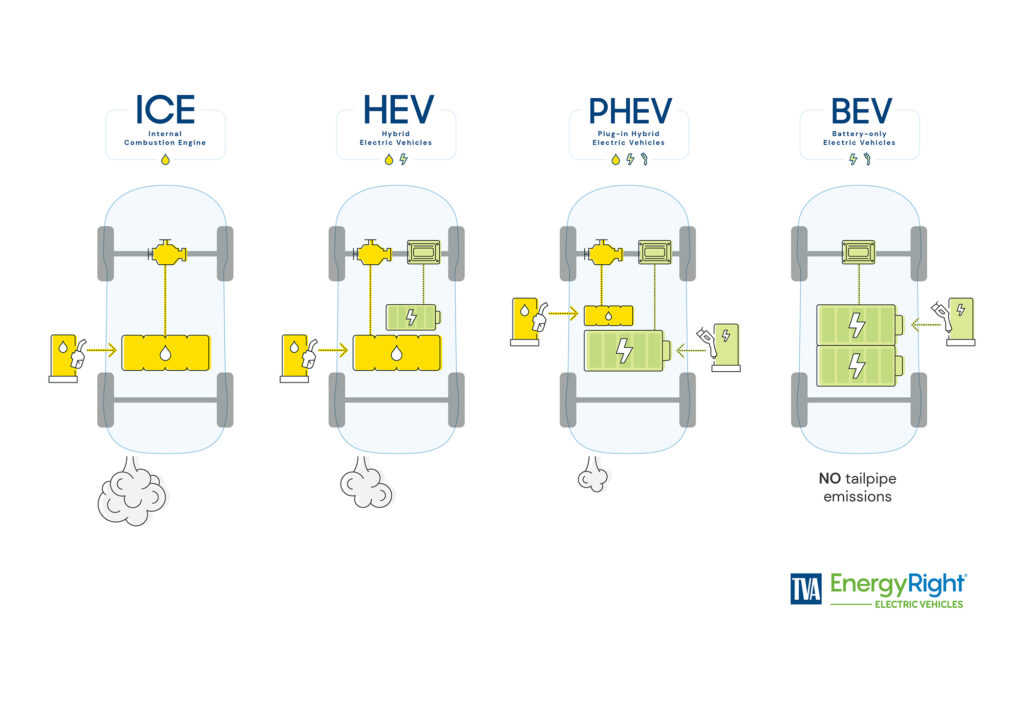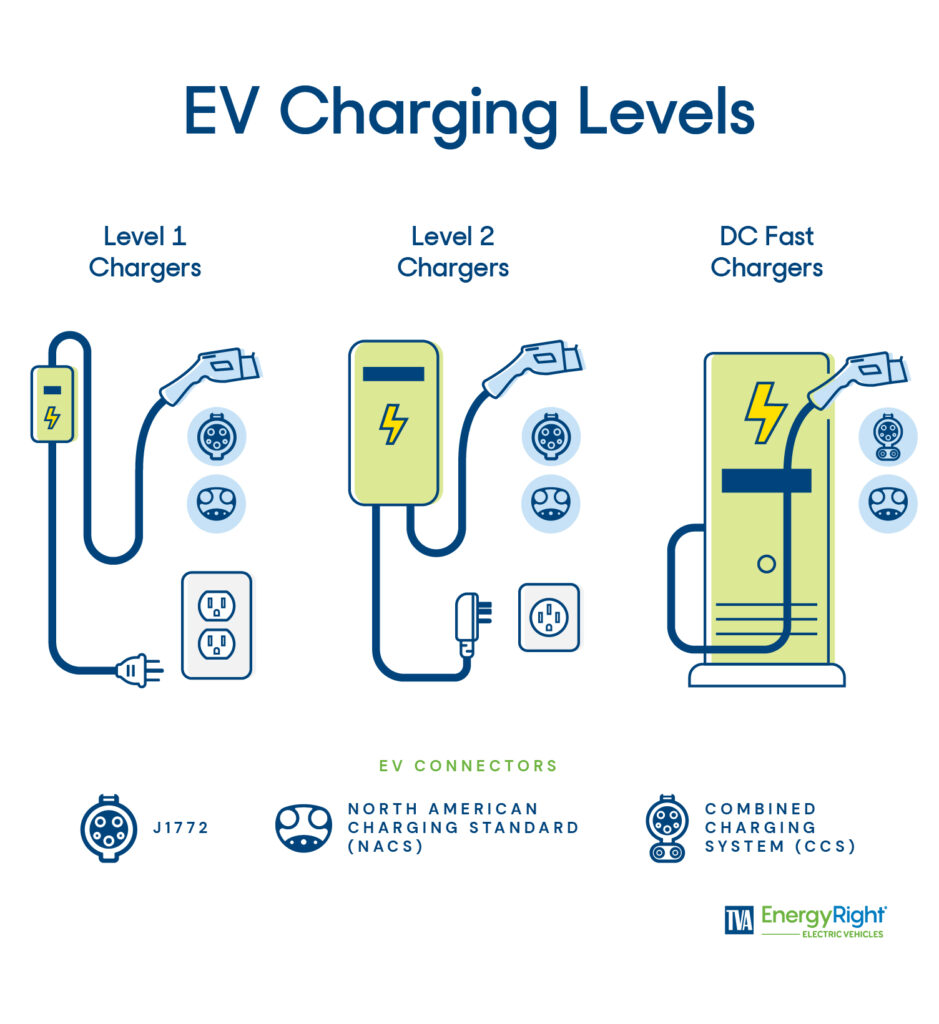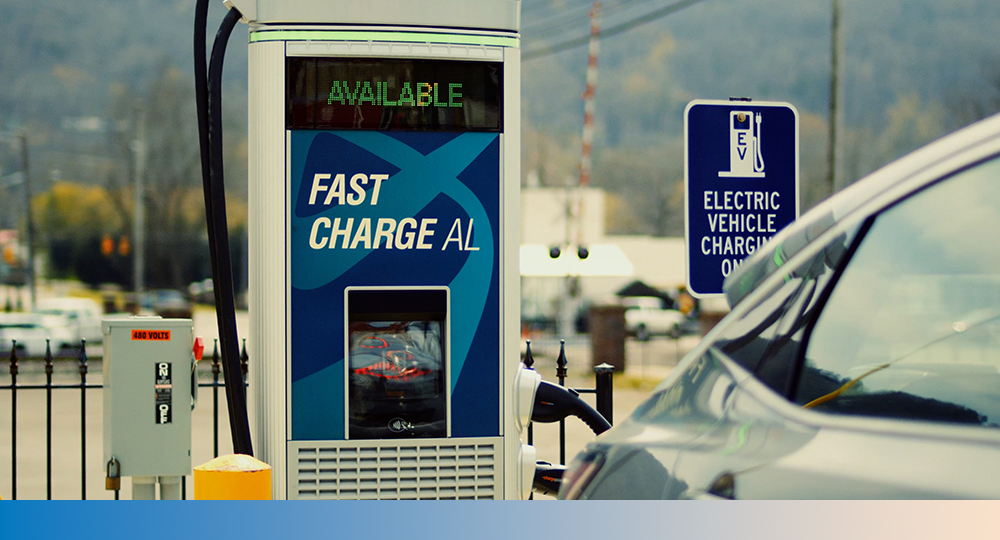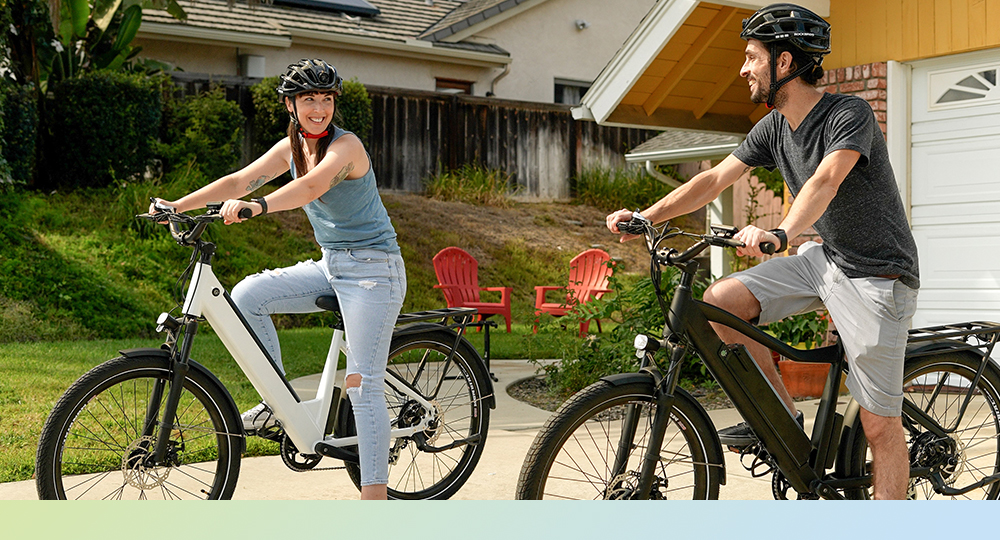How do I choose an electric vehicle that’s right for me?


How to choose and buy your first EV
For some, buying a new (or new-to-you) car is tons of fun: Test drives! New car smell! Fun features! For many folks, “Is an electric vehicle right for me?” is the big-ticket question of the day. Other drivers simply see the whole car-buying process as a fearsome chore.
Although we can’t change how you feel about buying a car, TVA EnergyRight can shed some light on the “Is an EV right for me?” question and make the decision-making a little easier.
In many ways, a car’s a car and buying an EV isn’t all that different. However, if you’re buying your first EV, there are a few fundamental differences between buying a gas-powered car and an electric-powered one. We’ll help you wrap your head around those differences so you can hit the sales lot with confidence.
Is an EV right for me? Let’s find out!
Identify your must-haves
In this regard, shopping for an EV is a lot like shopping for a gas-powered car: You need to find an electric car that’s right for you.
As more and more electric makes and models hit the market, it’s becoming easier to find a car that fits your lifestyle. Ask yourself: Where do I drive? What do I like about my car? What do I dislike? How do I drive? What do I need to carry?
If you’re using the car primarily for local commuting, your options range from affordable compact sedans to luxury trucks and SUVs. If performance is your priority, premium EVs can offer instant gratification and some of the quickest 0-60 times on the road. If you often travel long distances, look for an extended range battery-only EV. You may also want to consider the additional range flexibility that a plug-in hybrid or hybrid affords.
Find a dealer you trust
If you’re shopping for your first EV, you’ll probably have lots of questions. Look for a dealership that advertises their electric vehicle offerings and for a dealer who understands EVs and can guide you through the car’s features with confidence. Be sure to ask them whether or not the car is eligible for the federal tax credit, which changed in 2023.
Remember, you’re the customer! If you’re not clicking with the dealership or salesperson, visit another showroom or ask for a different representative. For those in the market for a pre-owned EV, consider finding a reputable online retailer like MYEV.com or Carvana.
Know your EV lingo
For a deeper dive into the different types of EVs, check out our post about the EV alphabet. In a nutshell, the biggest difference between a gas-fueled car and an electricity-fueled one is the powertrain.
EVs are powered by an electric motor, and the energy that fuels the motor is stored in batteries. Battery-only electric vehicles (BEVs) have larger battery packs than plug-in hybrid electric vehicles (PHEVs) or hybrid electric vehicles. Unlike PHEVs and hybrids, BEVs produce no tailpipe emissions.

Because electric motors have fewer moving parts than internal combustion engines, they require less maintenance. All types of EVs use regenerative braking systems that reduce wear and tear on brake pads and rotors. Regenerative brakes work by taking the energy produced by braking and feeding it to the EV’s batteries. In a traditional braking system, friction turns this energy into heat. Ultimately, the heat dissipates and the energy is wasted.
Source: How Stuff Works
Calculate your range requirements
To get a solid sense of your range requirements, keep track of how much you drive each week. Most EVs can travel around 250 miles on a single charge, while some of the premium models top out at around 400 miles.
Although the charging infrastructure is still being developed, TVA is collaborating with state agencies, local power companies and third-party charging experts to help alleviate range anxiety by creating a network of public fast charging stations at least every 50 miles along major travel routes in our seven-state region.
More and more public fast charging stations are coming, but at least 80% of EV charging happens at home, overnight. Since most EVs can handle a weekly commute with ease, owners typically charge up once or twice a week at home.
Sources: Electric Vehicle Database and Forbes
Check your charger
There are three ways to charge an EV: Level 1 (120-volt), Level 2 (240-volt) and DC fast charging. Charging connectors may vary by automotive manufacturer but most connect to Level 1, Level 2 and DC fast charging connectors.

Level 1 plugs into a standard outlet – just like your television or hair dryer. It will get the job done, but it’s a slow way to charge a car. If you routinely drive less than 30 miles a day, and can consistently plug in every night or two, this is a low-cost charging option that could work for you.
Most EV drivers recommend having a Level 2 charger professionally installed at your home. A Level 2 charger can plug into the same kind of outlet as your clothes dryer. Or, even better, you can skip the plug and have your charger hardwired directly to your electrical panel. Level 2 chargers can easily charge your car overnight, adding 100-200 miles of range while you sleep. (Check out some other tips from EV owners HERE.)
Public DC fast charging stations are available for longer road trips and can add 100-200 miles to your battery in 30 minutes or less.
Charging apps offered by manufacturers or third-party charging networks like ChargePoint, Chargeway, EVgo or PlugShare can help you make sure the charger you’re heading to has the connector you need and if they’re available to start charging.

Most new EVs have a combination of the J1772 and a combined charging system (CCS) connector in the same location. These charging systems are approved by the Society of Automotive Engineers (SAE). The top half enables Level 1 and Level 2 charging and the bottom half adds DC fast charging capabilities.
However, Tesla’s North American Charging Standard (NACS) is gaining traction in the U.S. Ford and GM announced in 2023 that they would offer present and future EV owners access to the more than 12,000 stations in Tesla’s NACS Supercharger network. In 2024, Stellantis announced that it would adopt the plug as well. Stellantis was the last major automaker holding out to announce the adoption of NACS, an official SAE standard.
Many charging station companies like Blink Charging, Chargepoint, EVgo, and Tritium have already announced support for NACS as well. They will soon offer NACS connectors on their DC fast chargers.
If you’re buying a used Nissan or Mitsubishi electric car, it may have a CHAdeMO connector. It’s worth noting that this connector is being phased out by many automotive manufacturers and it may be harder to find public fast charging options in the future. At this time, TVA’s Fast Charge Network sites will continue to support CHAdeMO connectors and CCS and will work to accommodate additional charging plugs as automakers adopt the various standards in the future.
Sources: Electrek, Driving Electric, EPA, Society of Automotive Engineers, Car and Driver, NBC News, electrek.
Tune in to your driving experience
EVs handle just like any other car you’ve ever driven. But they perform very differently.
Gas-powered cars take some time to build up maximum power and torque. EVs, on the other hand, hit peak power the moment you put the pedal to the metal. This instant torque makes EVs feel lively and quick. Some can even accelerate from zero to 60 in less than three seconds. If “fun to drive” is what moves you, be sure to check out acceleration time.
If acceleration isn’t your driving motivation, you’ll find that even the most modest and affordable EVs have plenty of pep for daily driving.
Source: U.S. News & World Report
Head out for a test drive
Still asking yourself, “Is an electric car right for me?” Well, if you’ve never gotten behind the wheel of an EV, shopping for a new car is the perfect opportunity. Make a list of your top contenders and have some fun figuring out which EV is right for you. Use our online tools to get started.
This site’s content (including, without limitation, references and links to third-party information) is based on information provided at the time of publishing, and TVA makes no warranty therein.



